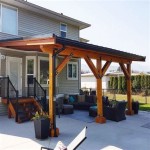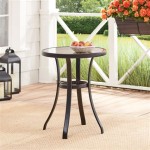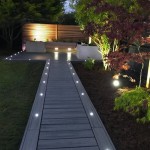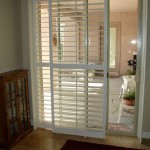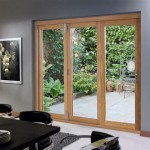Securing Your Dogs With a Patio Fence in the Netherlands
Owning a dog in the Netherlands brings immense joy and companionship. The Dutch culture is very dog-friendly, offering numerous parks, walking trails, and even establishments that welcome well-behaved canines. However, with this freedom comes the responsibility of ensuring the safety and security of one’s pet. A well-constructed patio fence provides a secure outdoor space for dogs, allowing them to enjoy fresh air and sunshine while minimizing the risk of escape or interaction with potential hazards. This article will delve into the critical aspects of selecting, installing, and maintaining a patio fence for dogs in the Netherlands, taking into consideration local regulations and common challenges.
Many factors contribute to the suitability of a patio fence for dog owners. These include the size and breed of the dog, the existing patio structure, the surrounding environment, and of course, the legal requirements pertaining to fences and animal control within the specific municipality. A properly chosen fence can significantly enhance the quality of life for both the dog and the owner, providing peace of mind and a safe, enclosed outdoor area.
Before embarking on the process of installing a patio fence, it’s essential to understand the potential benefits. A secure fence prevents dogs from running into traffic, interacting with aggressive animals, or wandering off and becoming lost. It also protects the dog from theft or other harmful interactions with strangers. Furthermore, a designated outdoor space can aid in house training by providing a consistent and accessible area for elimination. Beyond the practical advantages, a patio fence can also improve the aesthetic appeal of the property, adding value and creating a more inviting outdoor living space.
Choosing the Right Type of Patio Fence
The Dutch market offers a variety of fencing options suitable for securing dogs on patios. The best choice depends on several factors, including the dog's size, breed, temperament, and jumping ability, as well as the homeowner's budget and aesthetic preferences. Common materials include wood, metal (such as wrought iron or chain-link), and composite materials.
Wooden fences offer a classic and aesthetically pleasing look. They can be customized to match the existing architecture of the house and provide a solid visual barrier, which can be beneficial for dogs that are easily agitated by external stimuli. However, wood requires regular maintenance, such as painting or staining, to prevent rot and insect damage, particularly in the damp Dutch climate. Certain types of wood are also more prone to chewing, which can be a concern for some dogs.
Metal fences, such as wrought iron or chain-link, are generally more durable than wood and require less maintenance. Wrought iron fences offer an elegant and sophisticated look, but they can be more expensive. Chain-link fences are a more economical option, but they may not be as aesthetically pleasing. The spacing between the bars or links in a metal fence is a crucial consideration. It should be narrow enough to prevent the dog from squeezing through, especially for smaller breeds or puppies.
Composite fences are made from a combination of wood fibers and plastic. They offer the look of wood without the maintenance requirements, and they are resistant to rot, insect damage, and fading. While generally more expensive than wood, they can be a worthwhile investment in the long run due to their durability and longevity. Composite fences are also available in a variety of colors and styles to suit different tastes.
Beyond the material, the height of the fence is paramount. For smaller dogs or breeds that are not prone to jumping, a lower fence may suffice. However, for larger dogs or those with a history of escaping, a taller fence is necessary. A general rule of thumb is that the fence should be at least as tall as the dog is when standing on its hind legs. However, it's always best to err on the side of caution and choose a slightly taller fence, especially if the dog is known to be an agile jumper. It is also useful to consider whether the dog can dig underneath the fence. If so, measures should be taken to prevent this, such as burying wire mesh or concrete along the base of the fence.
Installation and Legal Considerations in the Netherlands
Before installing any fence, it is imperative to consult with the local municipality ("gemeente") to understand the applicable regulations and obtain any necessary permits. Dutch building codes often specify height restrictions, setback requirements, and material limitations for fences. Failure to comply with these regulations can result in fines or even the requirement to remove the fence altogether.
Furthermore, it is important to be mindful of property boundaries and avoid encroaching on neighboring properties. It is generally recommended to discuss the fence project with neighbors beforehand to address any potential concerns and maintain good relationships. In some cases, neighbors may even be willing to share the cost of the fence if it benefits both parties.
The installation process itself can be handled either by a professional fencing contractor or as a do-it-yourself (DIY) project. Hiring a professional ensures that the fence is installed correctly and meets all applicable building codes. However, it can be more expensive. A DIY installation can save money, but it requires a certain level of skill and experience. It is essential to carefully plan the layout of the fence, ensure that the posts are securely anchored in the ground, and use appropriate materials and techniques to ensure the fence is sturdy and durable.
When installing the fence, consider the presence of underground utilities, such as gas lines, water pipes, and electrical cables. Contacting "Meldpunt Grondroeringen Nederland" (KLIC) is essential to obtain information on the location of these utilities and avoid damaging them during the excavation process. Damaging underground utilities can be dangerous and costly to repair.
In certain situations where a permanent fence is not feasible or desired, temporary fencing options can be considered. These include portable dog fences, electric fences, or even using existing structures like patio furniture and planters to create a temporary barrier. However, it is important to ensure that these temporary solutions are secure enough to contain the dog and prevent escape. Electric fences, in particular, require careful training and supervision to ensure the dog understands the boundaries and is not harmed.
Maintaining a Secure Patio Environment for Dogs
Once the patio fence is installed, ongoing maintenance is crucial to ensuring its continued effectiveness and the safety of the dog. Regular inspections should be conducted to identify any signs of damage, such as cracks, weak spots, or loose posts. Prompt repairs should be made to prevent the dog from exploiting any vulnerabilities in the fence. This includes checking for gaps under the fence where a dog might attempt to dig. Regular weeding around the fence is also important to prevent plants from growing into the structure and causing damage.
Beyond the physical integrity of the fence, the patio environment itself should be carefully managed to minimize potential hazards for the dog. Toxic plants should be removed, and any potentially dangerous objects, such as sharp tools or chemicals, should be stored securely out of reach. Access to standing water should be restricted to prevent drowning. The patio surface should also be considered. Hot pavement can burn a dog's paws, so providing shade and access to cooler surfaces is important during warm weather.
Dog behavior also plays a critical role in maintaining a secure patio environment. While the fence provides a physical barrier, it is important to train the dog to respect the boundaries and avoid behaviors that could compromise its safety. This includes teaching the dog not to jump on the fence, dig underneath it, or chew on the materials. Positive reinforcement techniques, such as rewarding the dog for staying away from the fence, can be effective in modifying these behaviors. Consistent supervision is also important, especially when the dog is first introduced to the patio area. Regular walks and playtime outside the patio are also important to ensure the dog's needs are met and that it does not develop pent-up energy that might lead to destructive behaviors.
Finally, it is important to acknowledge that no fence is completely foolproof. Determined dogs may still find ways to escape, especially if they are left unattended for extended periods. Therefore, it is essential to microchip the dog and ensure that its registration information is up to date. This will significantly increase the chances of the dog being returned safely if it does manage to escape. Regular veterinary checkups are also important to ensure the dog is healthy and fit, which can reduce the likelihood of it becoming disoriented or lost. Consistent training and socialization will also contribute to a well-behaved and well-adjusted dog that is less likely to wander off in search of adventure.

Temporary Dog Fencing Custom Fence For Drives Gardens More Huck

Patio Fence For Dogs

Outdoor Dog Fences Easy Enclosures By Proofer

Outdoor Dog Fences Easy Enclosures By Proofer

Patio Fence For Dogs

Four Ideas For Dog Proof Gardens Corradi

Comprehensive Guide To Dog Run Fence Installation In Illinois

7 Best Deck Ideas For Dog Owners Trex

Folding Dog Fence 60cm High 50mm X Mesh Ideal For Puppy Small Dogs

6pcs Decorative Metal Garden Fence No Dig Outdoor Dog Panels Temporary Fencing For Yard Wire Border 32in
Related Posts


